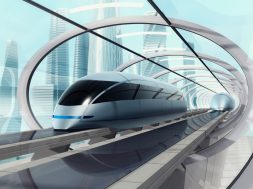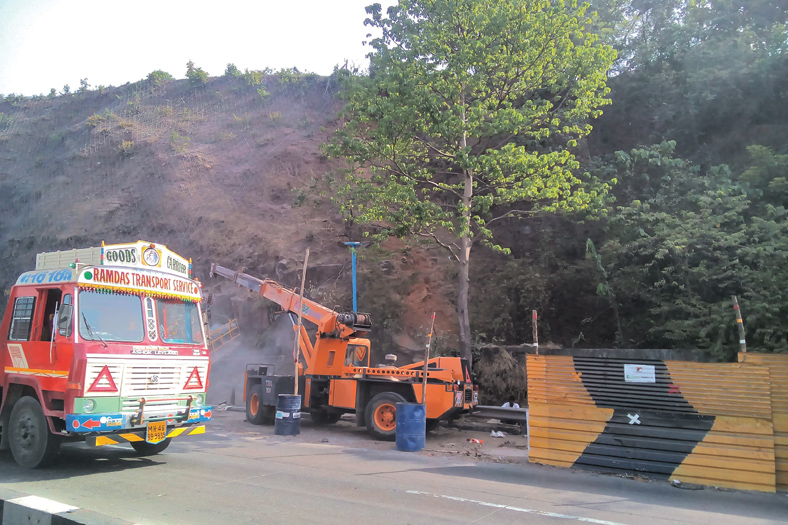Green Mobility in Airport
Emissions due to aviation contribute around 3-4 per cent to the pollution, and in future it is going to increase to a dangerous level
Humans will always evolve to travel distances within the shortest time. With this quest for conquering time to travel, the only visible option in the present day technology evolution (without under estimating the other modes of transport) is to fly and fly the fastest.
This leads us to the fact that the quantum of emissions due to the flying environment will in the near future increase to dangerous levels.
Today pollution is the greatest challenge. Population, technology and abuse of nature contribute majorly to this problem. The satisfying fact is, all nations have recognised this threat and are consciously working to reduce pollution while managing a balance between technology and pollution.
Emissions due to aviation contribute around 3-4 per cent to the pollution. All the stake holders, be it the aircraft and engine manufactures or the operators or fuel companies are striving to reduce aviation-related pollution. These efforts need to be sustained to attain our ultimate goal to conquer distance by flight.
Sustainability can be defined as an ability or capacity of something to be maintained or to sustain itself. It’s about taking what we need to live now, without jeopardizing the potential for people in the future to meet their needs.
Sustainability is greatly dependent on environmental demands, economic demands and social equality; all three popularly known as the three pillars of sustainability.
To have a measurable reduction in pollution, a multi-faceted and a synergised approach is required with a strong commitment from all stakeholders. The IATA (International Air Transport Association) has laid down its vision for ‘Carbon – Neutral Growth” from 2020.
Indian scenarioEconomic demands are of utmost concern in India. The country’s culture and financial aspects play as major barrier to switch to green technology. Efforts by the government to enforce policies with financial support to change to green technology will help overcome these barriers. Enforcement of policies alone, without financial support, will not support this change.
Recognising this need, India has made a domestic commitment to reduce the emission intensity of GDP by 20-25 per cent (as compared to the 2005 levels) by 2020. To attain this commitment, the need of the hour is to change the culture of the country from abuse of the environment to ethical consumerism.
The stakeholders in India, though fully appreciate of the requirement, are reluctant to adopt eco-friendly technology. The reasons are:• Low-end technology• Short product life• Exorbitant cost of battery replacement• Exorbitant costs for change over• Dependency on foreign OEM for acquisition and after sales• No import substitution available• Strict enforcement of government policies needs to be ensured.
Having known the looming dangers, taking advantage of the absence of enforcement of regulations and remaining silent due to business gains will not help us in the long run. The stake holders need to urgently re-align the business strategy with solutions for a sustainable environment.
Government initiativesThe government is promoting research, development and demonstration projects in the field of battery operated vehicles (BOVs) under the alternative fuel for surface transportation programme. The objective of the demonstration programme is to promote non-polluting BOVs in the country, which help in conserving oil and curb environmental pollutions.
Under the demonstration programme central subsidy is provided through renewable energy development agencies and departments in the states and UTs to institutional users for the purchase of the BOVs.
Under the research and development component of the programme, many institutions have undertaken research and development projects on new materials for development of high-energy density and low discharge rate batteries for use in BOVs (for ex-nickel metal hydride, nickel cadmium and lithium ion polymer electrolyte etc.)
Measures taken by government aviation bodiesThe Government of India has taken many steps to reduce the carbon footprints and one of them is the formation of national mission for electric mobility. The Ministry of Civil Aviation on its part is working on the following measures:• Use battery operated vehicles within airport area• Reduce noise pollution• Adherence to Energy Conservation Building Code (ECBC)• Use energy-efficient electric appliances and renewable energy• Efficient air traffic management to improve arrival and departure procedures and flow.
However, the government having brought in many enablers needs to do the following:• Provide tax concession to Indian OEMs to remain competitive• Enforce strict compliance to all stakeholders• Provide tax concession to the users to offset the huge acquisition costs.
MOCA initiatives• Adherence to Energy Conservation Building Code (ECBC) and Green Rating for Integrated Habitat Assessment (GRIHA) norms• Use of electrical appliances/equipment conforming to Bureau of Energy Efficiency with 3-Star rating and above• Occupancy sensors, timers to shut off lights automatically• Implementation of Building Management System (BMS) for optimum use of energy to meet functional requirement/energy demand• Energy-efficient fluorescent lamps, LED lamps for indoor lighting• Machine room less elevators which conserve about 40 per cent energy as compared to conventional elevators• Using LED lighting for taxiways and apron• Renewable energy: solar power, wind power, geo thermal energy power• Reducing noise pollution• Use of electrically operated vehicles within airport area.
DGCA has set up an Aviation Environment Unit in the Research and Development Directorate. The role of the Aviation Environment Unit is to assess the carbon footprint, noise levels, developing emissions reducing, and noise abatement procedures and establish national emission inventory. The unit is also participating in International Civil Aviation Organisation (ICAO) and other international forum on climate change issues and for the formulation of regulation as per the Chicago Convention.
Pollution from ground operations at airportsWhile aircraft and engine design are being refined to increase fuel efficiency, the support vehicles for aircraft operations also need to undergo major technological changes to reduce the ground pollution due to aircraft. The statistics is alarming; out of the total pollution produced in airport environment, 20 per cent is from Ground Support Equipment.
The first major step towards this is to convert the IC engine operated vehicles to electric platforms (battery operated).
Though we will all agree that this is an accepted norm, in India we have just begun to understand the seriousness of this requirement. The stakeholders in the aviation sector are importing electric platforms based ground support vehicles for use in airports. Few industries have made entry into the segment, and the indigenously manufactured products are now available in India.
Comparing well-to-wheel greenhouse gas emissionsIndigenous efforts by domestic industryIn Bangalore, Maini Materials Movement Pvt. Ltd., the manufacturer of eco-friendly MHE and passenger movement solutions, has now recognised the requirement and designed products for the aerospace sector. The company offers eco-friendly electric platforms for various airport support vehicles like tow tugs, customised requirements for military and commercial aviation operations, among others.
The electric platforms not only reduce the carbon footprints but also bring in associated advantage of reducing back end administration. These specially designed indigenous platforms will fit into the military aviation applications also.
Many IAF and Indian Naval airbases have started using electric platforms for their operational and maintenance support. However, the Ministry of Defence also needs to provide proactive policies as enablers to bring in this vital change.
There are host of flight safety features designed and incorporated into the electric platform making it ideal for use in aviation sector. These features are designed to be adaptable for use in a given set of aviation applications. The products are also designed to comply with the safety requirements for use in the aviation environment.
Way forwardWith the Indian civil aviation alone set to have an additional 1,000 aircraft by the next 20 years, apart from the acquisitions of military aircraft, it is the right time to look out for indigenous substitution and development of the electric platforms. This will ensure self-sufficiency in the coming decades.
A viable alternative is the hybrid electric vehicle (HEV) which uses both an electric motor with a battery and a combustion engine with a fuel tank. HEV technology helps in both non-CO2 and CO2 reductions. Calculations have shown that over the average HEV useful life time savings can amount to 6,000 litres of fuel.
HEVs function as stepping stone technologies to the large-scale electrification of fleets that is required for a long-term reduction of CO2 emissions from road transport and a low carbon transport sector especially in the aviation sector.
The government on its part needs to create a common platform for a collective sustainability plan which should include technology enablers, commercial concessions to the sector and motivational awards.
Authored by—
R. Prahalad,VP- Business Development (Aerospace & Defense),Maini Group
Cookie Consent
We use cookies to personalize your experience. By continuing to visit this website you agree to our Terms & Conditions, Privacy Policy and Cookie Policy.









